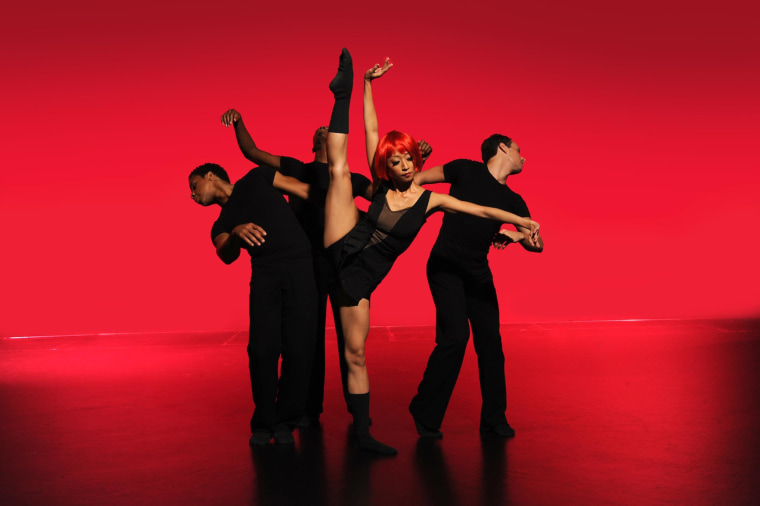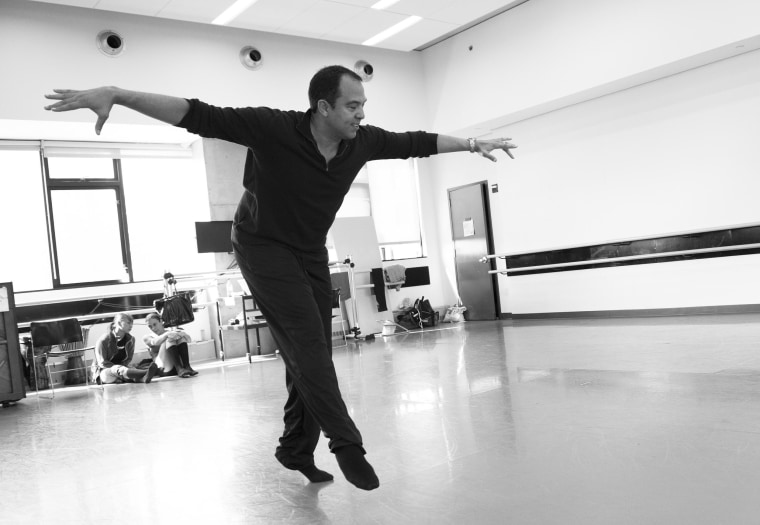NEW YORK, NY -- The name Ballet Hispanico might conjure up Flamenco or more of a folkloric dance performance, a far cry from the 44-year-old dance company's sleek, modern and powerful dances pieces.
"We fight that every day," said Artistic Director Eduardo Vilaro.
Now in its fourth decade, the world-renowned dance company's new season includes varied pieces, one evoking the prayers of a Spaniard waiting for rain, another wrestling with gender identity and another a surreal exploration invoking Belgian artist Rene Magritte.

This is the precisely the breadth of culture and identity that the nation's leading Hispanic dance company hopes to showcase. Ballet Hispanico is continuing the traditions Venezuelan-born Tina Ramirez was seeking when she founded the company in December of 1970. Its purpose, says Vilaro, "was really created to give voice to Latino artists.”
Ramirez inherited a dance studio in midtown Manhattan and formally created the company in December of 1970. Through the years, its core mission of showcasing Latino artists remains the same, yet it reflects the company's - and the country's - increasing Latino diversity.
The dances push existing boundaries, which is precisely what keeps audiences coming back to Ballet Hispanico. Vilaro’s own choreographed “Asuka” piece is a distinctive celebration of Celia Cruz’s music. The name of the piece is a play on words of the "Queen of Salsa's" beloved expression, "Azúcar!" which means sugar. The crowd-pleasing dance captures the essence and exuberance of the late Cruz.
The current company's dancers come from all over the world – Puerto Rico, Spain, Italy and Taiwan, just to name a few countries. Not having a Latino background certainly doesn’t preclude anyone from dancing with the company. This diversity also extends towards body type. Vilaro is proud that the company showcases an array of dancers' figures, which can go a long way towards producing positive images for children. “We are Latinos, we have hips,” Vilaro said.
This is Vilaro's fourth year as Artistic Director, taking over for founder Tina Ramirez. He was born in Cuba but came to the United States when he was six, growing up mostly in the Bronx. Vilaro founded the acclaimed Luna Negra Dance Theater in Chicago before joining Ballet Hispanico.
Recently Vilaro traveled back to his native Cuba. The experience contributed to his own piece,“Hogar,” (Home) which is making its New York debut. The dance explores heavy themes like family, home and immigration.

In the distinctly multicultural dance company, Vilaro collaborated with Russian composer Lev “Ljova” Zhurbin after being introduced by a mutual friend. “I’m always interested in finding those unique collaborations,” he said. He is also eager about showing the world premiere of “El Beso” (The Kiss) from Spanish choreographer Gustavo Ramirez Sansano, a colleague from their days at Luna Negra. The piece features original costumes by renowned Venezuelan designer Angel Sanchez.
Apart from Ballet Hispanico's performances around the world - currently 11 countries and three continents - their other two components are education and community outreach.
At their School of Dance, students as young as two learn ballet, modern and Spanish dance. During the group's current performance season in New York City, students watch the rehearsals and have the opportunity to interact with the dancers. "We integrate the students in any way we can."
Beyond their dance studio, Ballet Hispanico does outreach through its dance training in New York City schools and a touring program around the country. Vilaro is thrilled that enough time has passed in the company’s history that alumni of their School of Dance are circling back to the company in different capacities.
As Ballet Hispanico looks several years down into the future, Vilaro is hopeful that this growth can continue. He is candid, however, about the diminished role of the arts in the country, in particular the reduction in arts education in the schools.
He reflected on this during his recent trip to Cuba, when he got a chance to visit the homes of fellow artists. “In Cuba, it’s the artists who are wealthy.”
